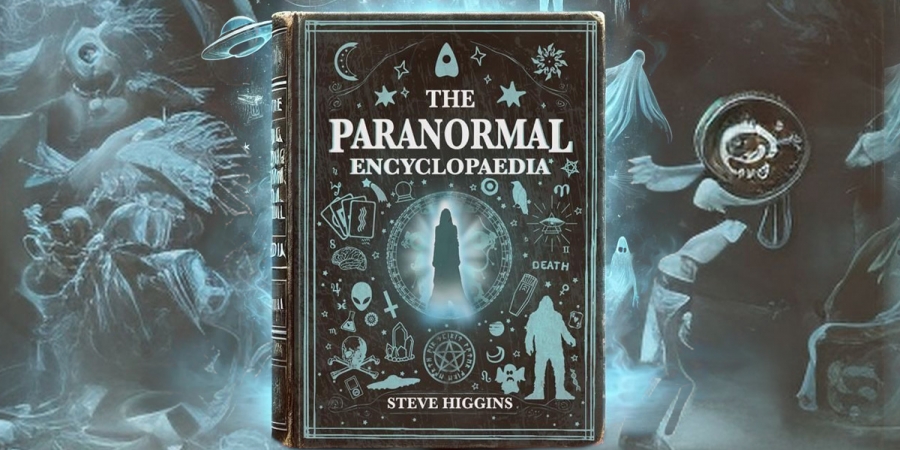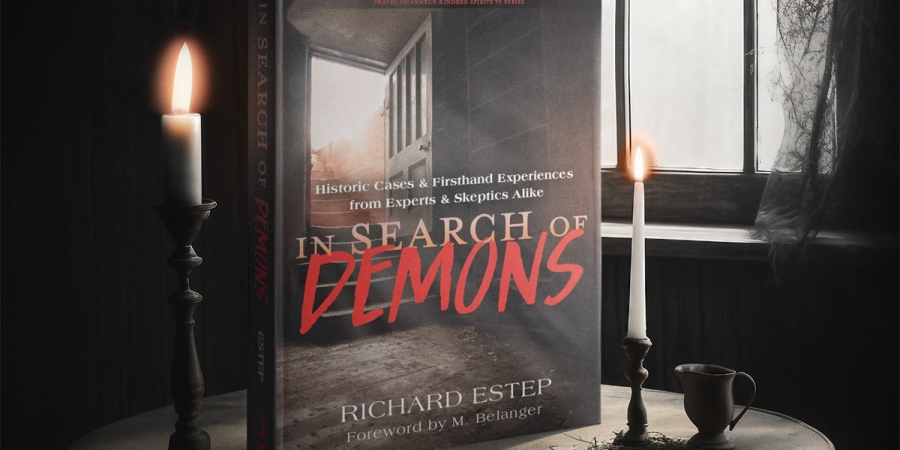'The Paranormal Encyclopaedia': Steve Higgins Releases A Comprehensive Guide To The Unexplained
'The Paranormal Encyclopaedia' is a massive 400-page book from the creator of Higgypop, containing detailed definitions of more than 200 paranormal terms.


Steve Higgins, an experienced writer and paranormal enthusiast, has released his latest work, 'The Paranormal Encyclopaedia'. This book serves as a comprehensive guide that defines, debates, and demystifies over two hundred terms related to the paranormal.
"What inspired me to write 'The Paranormal Encyclopaedia' was the fact I write about the paranormal in my day-to-day life anyway," Steve explained. "Over the last few years, I've written something like five thousand articles for my website. I thought it would be good to turn that wealth of writing into a useful resource."
Selecting the terms to include in the book was a natural process. "They're all terms that I've written about on the website anyway," Steve shared. "These are common terms, often misunderstood, and terms that are at the root of ghost hunting and paranormal investigation. It's about compiling the ones that come up most frequently and the ones every ghost hunter should know about."
From the encyclopaedia's top of abduction, specifically focusing on extraterrestrial encounters where individuals claim to have been taken by aliens, the book segues into the Advanced Aerospace Threat Identification Program (AATIP), a former U.S. government initiative to investigate unidentified flying objects (UFOs). A significant portion of the book is dedicated to various alien species and theories. The Andromedans, Arcturians, Greys, Nordics, Pleiadians, Reptilians, and Sirians are all discussed in detail, each with their unique characteristics and purported interactions with humans. These entries explore the concept of ancient astronauts, suggesting that extraterrestrials visited Earth in ancient times, influencing early human cultures.
Ghost hunting is another focal point, with explanations of apparitions, poltergeists, residual hauntings, and intelligent hauntings. Tools like the EMF meter, REM-Pod, spirit box, and thermal imaging cameras are explained, highlighting their use in detecting and communicating with spirits. The phenomenon of cold spots, often associated with ghostly presences, and the practice of lone vigils are also covered.
Psychic abilities and experiences are well-represented, including clairvoyance, clairaudience, clairsentience, and claircognisance. The book also delves into psychic mediumship, remote viewing, telepathy, and psychokinesis, offering insights into the capabilities claimed by psychics and mediums.
Paranormal investigation techniques are thoroughly explained, such as baseline readings, which establish the normal environmental conditions before starting an investigation, and the Estes Method, a technique for spirit communication involving sensory deprivation. The book also touches on dowsing rods, pendulums, and scrying as methods of divination.
Various unexplained phenomena are explored, including Bigfoot, Chupacabra, crop circles, and spontaneous human combustion. The Stone Tape Theory, which suggests that emotional or traumatic events can be recorded in the environment, and the Singapore Theory, positing that recreating the conditions of an event can trigger paranormal activity, are also discussed.
Steve's book stands out due to its unique approach to content. Steve elaborates, "Over the years of writing full-time about the paranormal, there have been surprises along the way, mostly about misconceptions on how ghost hunting works and how gadgets are believed to function. The book tries to give complete explanations of how these devices are believed to work from different perspectives, as well as the rational arguments against them. It offers a balanced view that readers can use to make their own minds up about using these methods and techniques when ghost hunting."
What sets 'The Paranormal Encyclopaedia' apart from other works in the genre is its format and purpose. "The main difference is the fact it's an encyclopaedia rather than a collection of ghost stories or write-ups about investigations, or even explorations of paranormal or parapsychological trends and terms," Steve highlighted. "This is more of a reference book. It's alphabetical. People can flick through, get the bit of information they need, and it's always there to guide them and help educate and inform on the subject."
The encyclopaedia doesn't shy away from scientific and psychological perspectives. Concepts like confirmation bias, the Barnum Effect, illusory correlation, and the Sheep-Goat Effect are explained, providing a balanced view of how human perception and belief can influence the interpretation of paranormal experiences.
Government and military projects related to the paranormal and UFOs are covered in detail, including Project Blue Book, Project Sign, Project Grudge, Project Hessdalen, Project Magnet, and the Flying Saucer Working Party. The controversial Majestic 12 (MJ-12) documents and the recent Unidentified Aerial Phenomena Task Force (UAPTF) are also included.
Steve hopes that readers will find 'The Paranormal Encyclopaedia' to be an invaluable resource. "I want it to be a tool that helps people understand the complexities and the basic terms associated with ghost hunting and paranormal investigations."
As a skeptic himself, Steve maintains a balanced perspective, offering rational explanations and encouraging readers to form their own opinions. 'The Paranormal Encyclopaedia' is an essential resource for anyone interested in the paranormal. Steve has compiled a thorough and balanced guide that provides readers with a wealth of information, allowing them to explore the mysteries of the unknown. Whether you're a seasoned investigator or a curious newcomer, this encyclopaedia offers valuable insights into the world of the paranormal.
'The Paranormal Encyclopaedia' is available now as an ebook for Kindle, or as a paperback or hard cover from Amazon.
'The Paranormal Encyclopaedia' is available now as an ebook for Kindle, or as a paperback or hard cover from Amazon.
Further Reading
Dive into the world of the paranormal and unexplained with books by Higgypop creator and writer Steve Higgins.

Demystifying The Oracle
A balanced look at Ouija boards, exploring whether they are toys, tools, or dangerous occult devices.
Buy Now
Hidden, Forbidden & Off-Limits
A journey through Britain's underground spaces, from nuclear bunkers to secret wartime sites.
Buy NowMore Like This

Kate CherrellApril 14, 2025
Kate Cherrell's Debut Gothic Horror Novel 'Begotten' Arrives This May

BooksMarch 17, 2025
Revisiting 'Mind To Mind': René Warcollier's 1948 Book On Telepathy

Remote ViewingMarch 05, 2025
7 Things We Learnt About Remote Viewing From This Forgotten Book

BooksNovember 22, 2024
Richard Estep Explores The Demonic In His New Book 'In Search Of Demons'
 See More on Audible
See More on Audible
Comments
Want To Join The Conversation?
Sign in or create an account to leave a comment.
Sign In
Create Account
Account Settings
Be the first to comment.